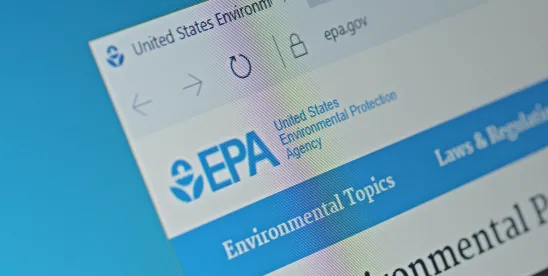Sam Hess of Inside EPA has a fulsome report on EPA's everything but the kitchen sink attempt to avoid a nationwide freeze of its most recent definition of Waters of the United States in litigation filed by a North Carolina landowner that was already a defendant in a Federal enforcement action for filling wetlands.
EPA says that at least some of the North Carolina landowner's property that is the subject of the pending enforcement litigation is within the reach of the Clean Water Act, no matter how narrowly one interprets the statute.
That may be true, but it also ignores the fact that over half of our nominally United States have also challenged EPA's most recent Waters of the United States rule. And what might be good enough to resist the North Carolina “goose” may not be nearly good enough to stave off the twenty-six State “ganders” and the many NGOs in their camp.
It isn't clear whether EPA doesn't understand what our nation's highest court has done to the Clean Water Act or just won't admit it.
In its opposition to the motion for an injunction EPA says “[e]ven if this Court disagrees that the Agencies’ interpretation is the best reading of the CWA, it is a reasonable and permissible interpretation of an ambiguous phrase, “navigable waters,” and its definition, “waters of the United States.” 33 U.S.C. § 1362(7). Chevron deference extends to an agency’s construction in rulemaking like this one of a statute it administers, even if the statute addresses the scope of agency jurisdiction. . . And Sackett did not disturb the Court’s earlier rulings on the CWA’s ambiguity or deference to the Agencies (emphasis added).
Putting aside the fact that any day the Supreme Court will issue another opinion in Loper Bright Enterprises v. Raimondo that is widely expected to formally end Chevron deference, how can one possibly think that doctrine is still applicable to EPA's interpretation of the definition of “Waters of the United States”.
In Sackett, the Court “hold[s] that the CWA extends to only those wetlands that are ‘as a practical matter indistinguishable from waters of the United States.’" The tone of the Court's opinion respecting EPA's and the Army Corps of Engineers' responses to prior Supreme Court opinions on the topic, not to mention the burden associated with jurisdictional determinations, was, as a friend would say, indecorous.
Now, to be clear, I'm not happy about any of this. As I've written before, there is most certainly a strong scientific basis for the most recent Waters of the United States rule. In fact, such an extension of Clean Water Act jurisdiction would share its intellectual underpinning with the Supreme Court's majority opinion in another Clean Water Act case, Hawaii Wildlife Fund v. Maui.
But Justice Alito's opinion of the Court in Sackett (and his dissenting opinion in Maui) isn't about overwhelming scientific evidence. It is about whether there is "clear evidence that [EPA] is authorized to regulate in the manner it proposes." And in Sackett the Court concluded that the Clean Water Act extends to only those "wetlands" (and other relatively permanent bodies of water connected to traditional interstate navigable waters) with a continuous surface connection to such "Waters of the United States" "in their own right".
Whether or not the North Carolina case is the best vessel for challenging what EPA and the Corps have done since that opinion, EPA is going to have to do better than Chevron deference if it hopes to sustain this rule.
“Rather than deciding the lawfulness of the adjacent wetlands provisions of the Amended Regulations based on speculation that they might be applied unlawfully in hypothetical situations, this Court should allow the facts to develop -- either through the Enforcement Case, which could shed light on the Agencies’ application of Sackett and interpretation of the Act, or through Mr. White seeking a jurisdictional determination from the Corps,” EPA said.
https://insideepa.com/daily-news/epa-urges-court-deny-plaintiff-s-bid-nationwide-wotus-in




 />i
/>i

